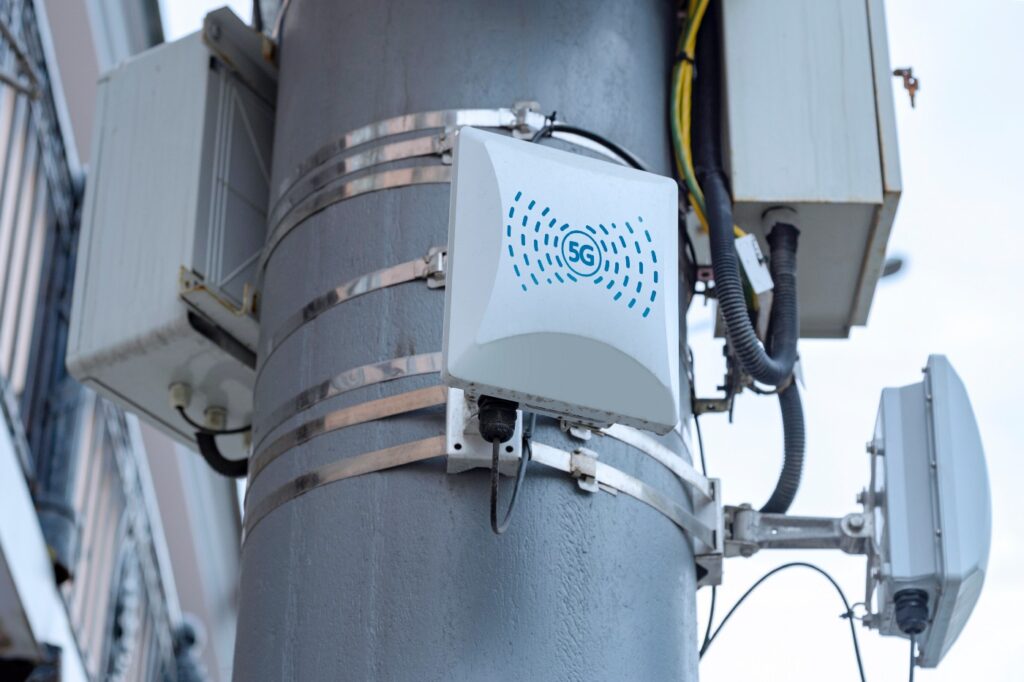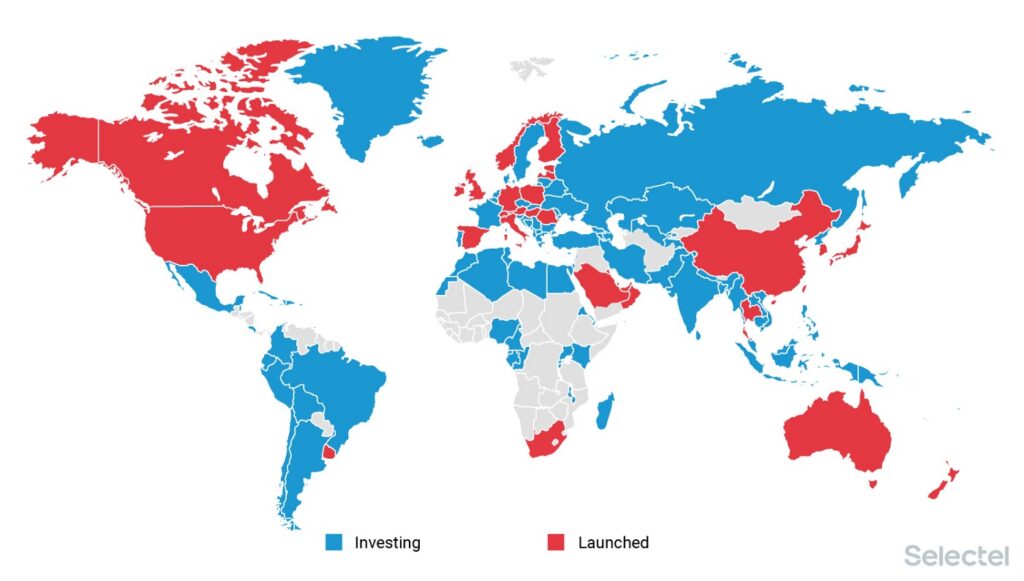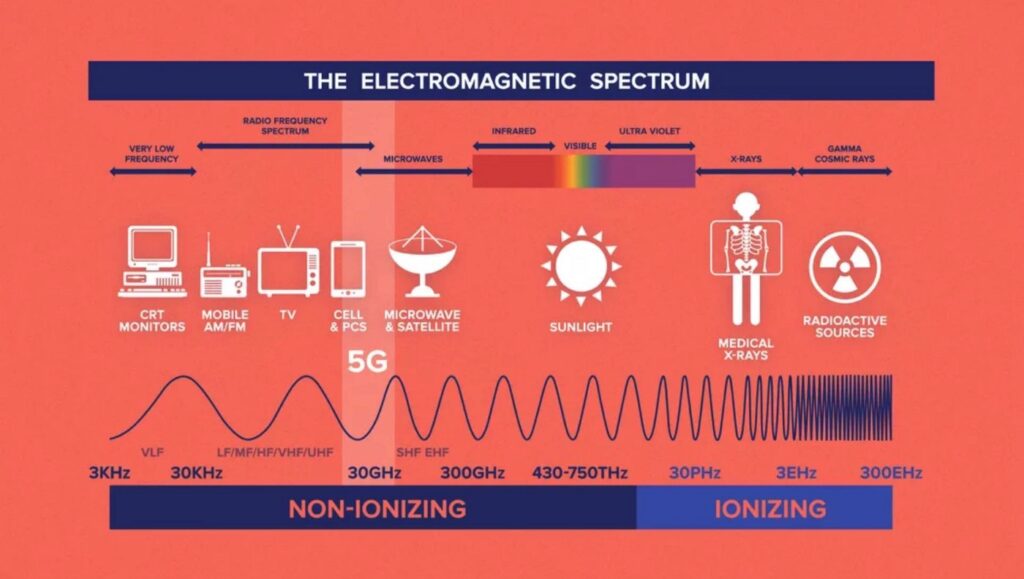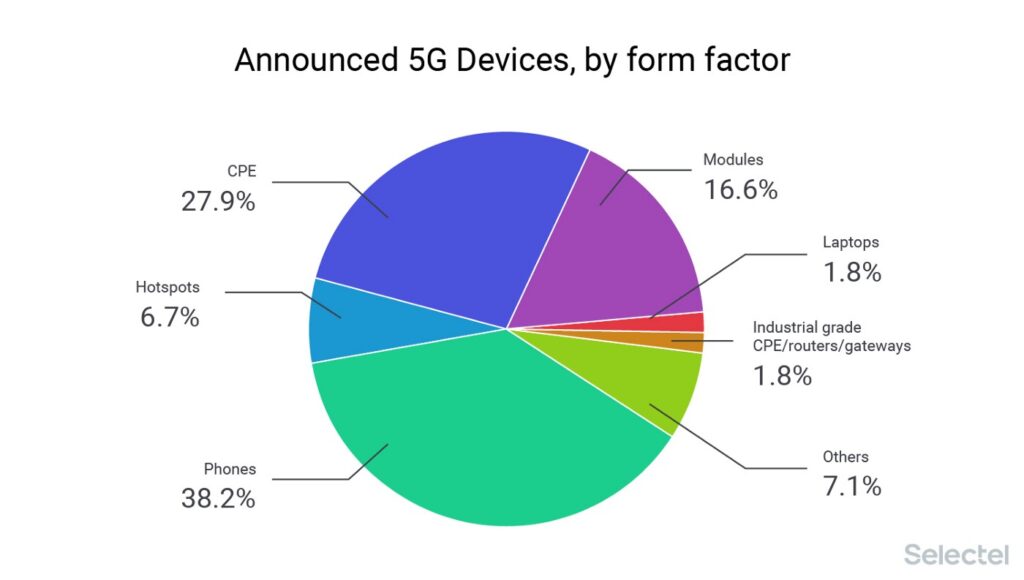The Fifth Generation

A truly bizarre reality seems to be unfolding with regard to the new fifth generation of wireless technologies. The 5G base stations are considered coronavirus carriers, weapons of mass destruction, and a major health threat with a capacity equivalent to dozens of microwave ovens. Let’s take a look at what lies behind the new technology and when we can expect the 5G symbol to appear on smartphone screens in Russia.
Enough space for everyone
According to analytics company GfK, the share of mobile internet users in Russia reached 61% at the beginning of 2019 (compared to 56% in 2018). In addition, the number of purchased smartphones reached a record high of 30.14 million. All these devices—not only smartphones—have to share a limited frequency spectrum. Don’t forget other devices requiring internet connection—security systems, car alarm systems, automated data collection systems… And here we are complaining about rush-hour subway crowds!
One of the major fundamental features of 5G is that is supports other frequency ranges (between 600–6000 MHz and 24 GHz–100 GHz), some of which have not been used for such purposes before. As a result, we can release some existing frequencies and enjoy more freedom of network communication.
Since the wave frequency has increased multiple times, new generation networks use shorter waves than 4G. As a result, the efficiency and speed of connection increases.
Wave length also affects another specific 5G feature: new-generation networks require more compact network architecture. Short high-frequency waves do not pass through walls, even a bushy tree or heavy rain can be obstacles for such waves. Therefore, more antennas and base stations are required for 5G deployment. So even if you’re lost in the concrete jungle, you should still have access to Google maps.
In Russia, pre-5G architecture was tested on a mass scale for the first time during the 2018 World Cup. At the time, MTS and Ericsson deployed a network based on the Massive MIMO (Multiple Input Multiple Output) technology in seven cities where matches were played. This is another “5G herald.” Massive MIMO is a solution that allows for installing more antennas on base station masts. As a result, the network throughput and capacity increases. It makes sense: the more employees a call center has, the lower the chance you will be held on the line for five minutes listening to background music.
There are also several algorithms that make 5G networks innovative. Beamforming technology plays the role of traffic guide for base stations. It determines the most efficient path to a specific device for the wireless signal. The use of full duplex is another feature of the new-generation networks. When using this data transmission method, the transceiver can transmit and receive data simultaneously at the same frequency.

Brave new world
The 5G technology supports several application scenarios with difficult-to-pronounce names. In fact, these stand for implementation areas that are quite easy to understand.
eMBB (enhanced Mobile BroadBand)
This acronym refers to our commonplace mobile internet. According to the most modest forecasts, 5G will speed up the internet to 2 GB/sec. This means that you will be able to download all episodes of Friends in HD while preparing popcorn in the microwave.
Other advantages include:
- Improved network quality during mass gatherings (sports matches, concerts, etc.);
- Live broadcast without delays and quality loss with AR (augmented reality) features;
- More realistic VR games and various applications using AR;
- Internet access in transit (intercity buses, trains).
URLLC (Ultra Reliable Low Latency Communications)
With 5G, network delays (between the base station and the end device) can be reduced. Latency will be reduced 45 times more than with 4G to 1 millisecond.
Application areas:
- Self-driving transport;
- Remote surgery.
mMTC (massive Machine Type Communications)
Application areas:
- Industry 4.0 (implies a high degree of industry robot automation with minimum human involvement);
- Internet of Things.
5G in Russia
In August last year, MTS and Huawei deployed a pilot new-generation communication network in Kronshtadt. At that time, eight base stations were required to cover the inhabited area of the small port city. In the Russian capital, pilot 5G versions were deployed in the VDNKh region and in Tverskaya Street, from the Kremlin to the Garden Ring Road.
Initially, the new 5G era in Russia was expected to start in 2022, with the new technology being deployed in ten major cities. In February, the launch was postponed by two years. There are several reasons for the delay, and it is not because of the coronavirus pandemic.

In fact, it is to do with how 5G antennas are integrated with our conventional masts. Source: shutterstock.com
Domestic development
The largest global manufacturers of fifth-generation network equipment are well-known companies — Huawei, Ericsson, and Nokia. Purchasing the necessary infrastructure for 5G development from these market players means absolute dependence both in terms of the equipment price and its management. Therefore, many countries, including Russia and the US, are not eager to purchase products developed abroad, given the serious risks to national security.
Last year, the development of domestic equipment for 5G networks was taken on by MTS, Skoltech, Element LLC (a subsidiary of Rostec State Corporation and AFK Sistema PAO). In February of this year, the import substitution goal was set by another collaboration—Globalinformservis and JSC Concern Sozvezdie (part of the Rostec State Corporation).
Manufacturing domestic equipment may reduce the final cost by several times, which, on the one hand, will make it easier to implement 5G in Russia. On the other hand, the development of independent solutions in compliance with all quality standards will require more time when compared to purchasing ready-made equipment.
At new heights
The allocation of the “golden” frequency range for the deployment of new-generation networks was widely discussed. Around the world, manufacturers of equipment and mobile devices are targeting the 3.4–3.8 GHz frequency band. In Russia, these frequencies are already being used by the Ministry of Defense and Roscosmos, and they are not willing to share. The issue of releasing frequencies for 5G deployment came up against the recommendation to consider the vacant 4.4–4.9 GHz band.
The alternative has not been accepted by mobile operators. A higher frequency band will require more base stations, and the equipment will be more expensive on the whole. For the rest of the world, the equipment will be manufactured for the 3.4–3.8 GHz range, while exclusive solutions will cost a lot of money.
The frequency allocation is still being discussed. As recently as a month ago, the Ministry of Communications was prepared to meet mobile operators half-way and release several tens of megahertz within the 3.4–3.8 GHz range, which was better than nothing. But in the last few days, the Security Council refused once more to allocate the “golden” frequency range for 5G development.
Will the interested parties manage to reach a consensus? Most likely. But this will also take time.
5G around the world
Several countries have entered the full-scale race at new speeds.
South Korea
The first country to adopt 5G at a national level was South Korea. When this took place in April 2019, the largest local mobile operator, SK Telecom, installed 34,000 base stations in 85 cities. According to the latest data, the number of users of the new-generation mobile network in the country has exceeded 5 million. The network is available to owners of the Samsung Galaxy S10 smartphone, which is already equipped with the 5G modem.
China
Next, ahead of the US, China announced the launch of 5G networks. By the end of 2020, local mobile operators expect to install 600,000 base stations nationwide, and this goal has already been accomplished by one third. The country’s government notes that coronavirus has only contributed to understanding the importance of transitioning to 5G. In Beijing, for example, drones using 5G delivered hot food to sick people to minimize contact between healthy and infected people during the pandemic, and in Wuhan, self-driven vehicles sprayed antiseptic in the streets.

According to Global Mobile Suppliers Association (GSA)
US
US President Donald Trump announced his desire to deploy not only 5G, but also a non-existent 6G network in the US in February 2019, but America still lost out to Asia in this respect. Several American telecom leaders are working on implementing a new generation of communications. In December, for instance, T-mobile launched a nationwide 5G network that covers 60% of the US population; AT&T has covered 32 cities in the country with new-generation network services, and Verizon—34 cities.
Switzerland
The first European country to adopt 5G was Switzerland. More than 2,000 base stations have been installed in the country. The new-generation network covers more than 90% of the population. The infrastructure was deployed by Swedish mobile operator Swisscom and telecom company Ericsson.
It should be noted that while 5G is expanding confidently around the globe, some regions (cantons) in Switzerland have actually imposed a moratorium on the operation of the new-generation networks. Local authorities fear that the technology could cause harm to the health of citizens. Potential concern is caused by everything that distinguishes 5G from its predecessors—the range of operation, the wave length, and the network architecture.
No need to burn towers
Ironically, it is the development of the internet that has contributed to the increased wave of distrust in 5G. Videos about the technology’s hazards, its contribution to the spread of coronavirus, and other horrors are being distributed on YouTube and social media. And even if the appeals of certain media personalities may not pass the adequacy filter, the situation in Europe might make you think wonder.
In the UK, for example, people set fire to 5G base stations and prevented telecom company employees from doing their work. Like it or not, if you watch enough videos with disturbing background music, you could become suspicious of the telephone pole outside your window.
People are often afraid of new things. But from a technical perspective, there is nothing new about 5G. The difference between this generation of communication and its predecessor lies only in the modified network architecture and algorithms, which provide faster and more orderly signal transmission.
5G is the incredible Hulk, while 4G is Bruce Banner: the scientist has grown bigger and greener, but the haircut and pants are the same.
And a base station is not a super hero in terms of its emission power. According to the standards established in Russia and worldwide, the normal value for antennas should not exceed 0.5–0.6 µW/sq.cm. Any violation is followed by sanctions. The permitted limit for mobile equipment emission in our country is 10 µW/sq.cm. This is one of the strictest thresholds in the world. For comparison, this threshold extends to 200–1000 µW/sq.cm in the United States, Canada, Europe, and Japan.
But it were 5G antennas and stations that conspiracy theorists attacked, even though the radiation emitted from them that reaches a person is hundreds of times lower than that of a smartphone. A device pressed against a human ear emits about 1–10 µW/sq.cm. And no, this is not a call to burn your iPhone.
The World Health Organization (WHO) notes that existing studies give no confirmed evidence of the impact of wireless technologies on human health in a range up to 300 GHz. The organization has dedicated a special section to 5G on its website.

Catch me if you can
What we really need to worry about with respect to 5G are data security and cybercriminals, says Andrey David, head of customer security at Selectel. After all, the new generation of networks will not only inherit existing security threats, but also add a few more reasons to worry.
Threats related to 4G:
- Disclosure of the subscriber location;
- SMS interception;
- DoS attacks on subscribers and operator equipment.
In the future, the effect can be multiplied by 10, because hackers will also use 5G.
Other threats the 5G world will face:
- Specific features of the new-generation network architecture open up new loopholes for fraudsters. A 5G network entails thousands of small antennas and each of them is a potential object to be hacked. Scientists from Purdue University and the University of Iowa highlighted one of the methods — a perfect imitation of the operator’s base station and interception of data from connected devices.
- The higher speed will automatically increase the channel capacity of DDoS attacks. It is quite simple: higher network bandwidth means that more data packets will “arrive” from bots that will “take down” your server in a matter of seconds.
- New-generation networks promise to bring medicine, transport, and industry to a new level. Medical devices, industrial infrastructure components, vehicles and smart homes will be connected to 5G. Together, they will be generating a large amount of confidential data. Telecom operators and other participants of technological processes will have to guarantee the security of this information.

According to Global Mobile Suppliers Association (GSA)
How to deal with threats
Of course, threats are not ignored. Major European companies, including Nokia and Ericsson, and research centers such as Oxford, the University of Southampton and others have joined forces to develop new information security standards. Together, they launched the 5G Ensure project funded by the European Union’s Horizon2020 grant program.
Mobile networks are being standardized by the 3GPP (3rd Generation Partnership Project) international consortium, which is based on seven national organizations for standardization. Established in 1998, it has developed a range of standards, including standards for GSM (2G), UMTS (3G) and LTE (4G). The final IMT-2020 standard (this is the non-media name for 5G) is expected in June of this year.
Scientists, economists, businesspeople and conspiracy theorists agree on one thing: 5G will change our lives. Whether this change will consist of a major transformation of entire industries or just some minor upgrades remains to be seen.
According to a report released by the GSM Association, the number of connections to new generation networks in Russia will reach 46 million by 2025. Perhaps, one day they will write about us: “Once upon a time in Russia, there was a happy-go-lucky young generation who smiled at the summer, the sea and the sun, and… watched Netflix uninterrupted on high-frequency 5G waves”.